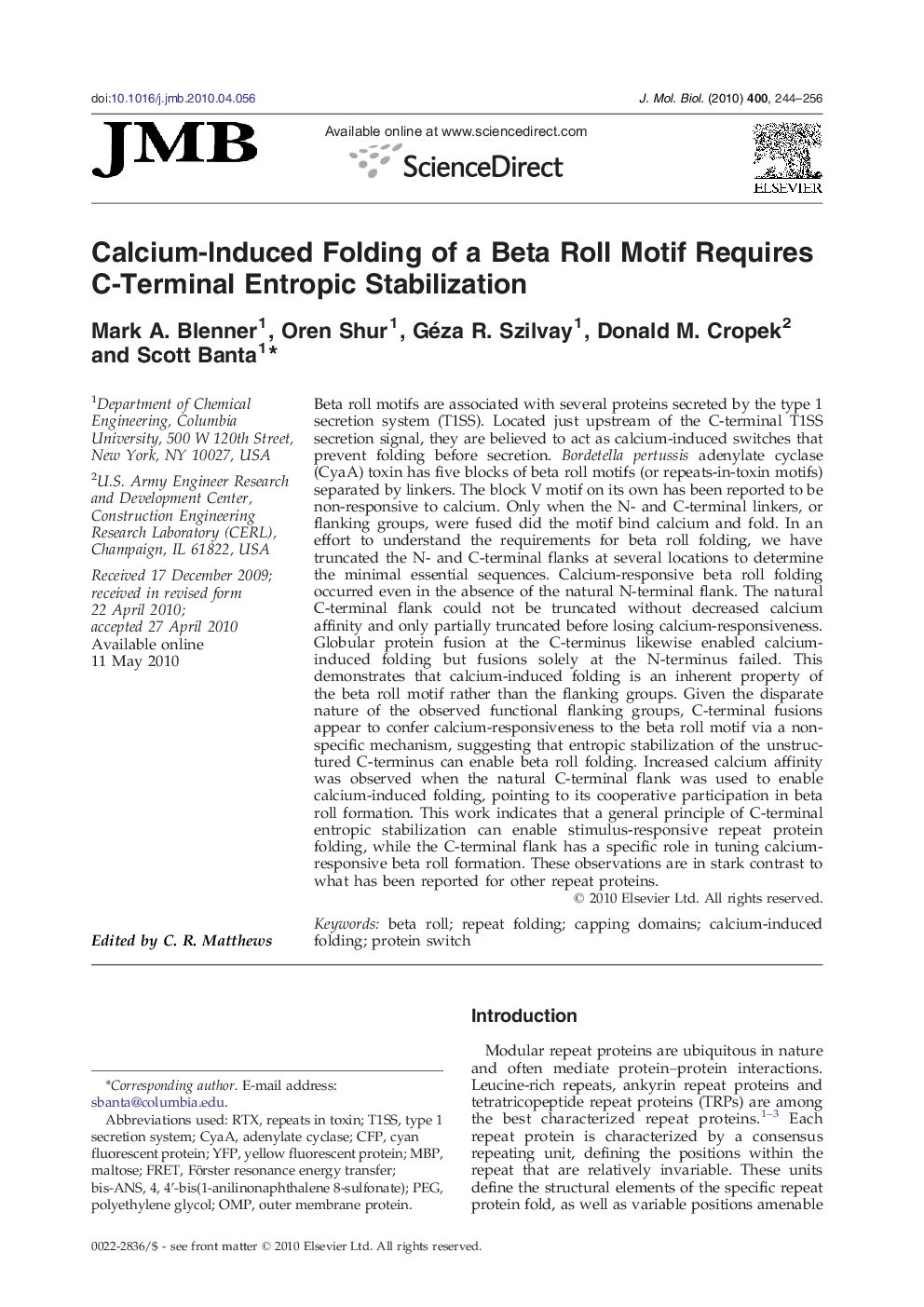| Article ID | Journal | Published Year | Pages | File Type |
|---|---|---|---|---|
| 2185922 | Journal of Molecular Biology | 2010 | 13 Pages |
Beta roll motifs are associated with several proteins secreted by the type 1 secretion system (T1SS). Located just upstream of the C-terminal T1SS secretion signal, they are believed to act as calcium-induced switches that prevent folding before secretion. Bordetella pertussis adenylate cyclase (CyaA) toxin has five blocks of beta roll motifs (or repeats-in-toxin motifs) separated by linkers. The block V motif on its own has been reported to be non-responsive to calcium. Only when the N- and C-terminal linkers, or flanking groups, were fused did the motif bind calcium and fold. In an effort to understand the requirements for beta roll folding, we have truncated the N- and C-terminal flanks at several locations to determine the minimal essential sequences. Calcium-responsive beta roll folding occurred even in the absence of the natural N-terminal flank. The natural C-terminal flank could not be truncated without decreased calcium affinity and only partially truncated before losing calcium-responsiveness. Globular protein fusion at the C-terminus likewise enabled calcium-induced folding but fusions solely at the N-terminus failed. This demonstrates that calcium-induced folding is an inherent property of the beta roll motif rather than the flanking groups. Given the disparate nature of the observed functional flanking groups, C-terminal fusions appear to confer calcium-responsiveness to the beta roll motif via a non-specific mechanism, suggesting that entropic stabilization of the unstructured C-terminus can enable beta roll folding. Increased calcium affinity was observed when the natural C-terminal flank was used to enable calcium-induced folding, pointing to its cooperative participation in beta roll formation. This work indicates that a general principle of C-terminal entropic stabilization can enable stimulus-responsive repeat protein folding, while the C-terminal flank has a specific role in tuning calcium-responsive beta roll formation. These observations are in stark contrast to what has been reported for other repeat proteins.
